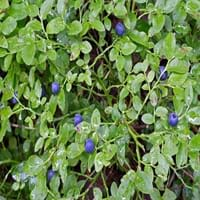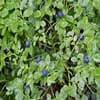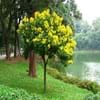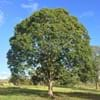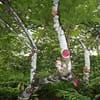Life Span
Perennial
Perennial
Type
Tree
Bulb or Corm or Tuber
Origin
Caribbean, Central America, South America
Mediterranean, Turkey
Types
Alaskan blueberry, Lowbush blueberry, New Jersey blueberry
Not Available
Habitat
Dappled Shade, Sunny Edge, Woodland Garden Canopy
meadows, Terrestrial
USDA Hardiness Zone
10-15
3-9
Sunset Zone
Not Available
21,22
Habit
Oval or Rounded
Clump-Forming
Flower Color
White
White, Blue, Pink, Violet
Flower Color Modifier
Bicolor
Bicolor
Fruit Color
Dark Blue, Black
Not Available
Leaf Color in Spring
Green
Green
Leaf Color in Summer
Green, Dark Green
Light Green
Leaf Color in Fall
Dark Green
Several shades of Green
Leaf Color in Winter
Dark Green
Light Green
Leaf Shape
Pinnate
Long Linear
Plant Season
Spring, Summer, Fall, Winter
Spring, Winter
Sunlight
Full Sun, Partial Sun
Full Sun, Partial Sun
Growth Rate
Medium
Medium
The pH of Soil
Acidic, Neutral
Acidic, Neutral, Alkaline
Soil Drainage
Well drained
Well drained
Bloom Time
Late Spring, Early Summer, Summer, Late Summer, Early Fall
Early Spring, Late Winter
Tolerances
Not Available
Drought
Where to Plant?
Ground
Container, Ground, Pot
How to Plant?
Seedlings, Stem Cutting
From bulbs, Seedlings
Plant Maintenance
Medium
Medium
Watering Requirements
Average Water Needs
Average Water Needs, Do Not over Water, Do not water frequently, Keep the ground moist but not water-logged, Never Over-water
In Summer
Lots of watering
Lots of watering
In Spring
Moderate
Moderate
In Winter
Average Water
Average Water
Soil pH
Acidic, Neutral
Acidic, Neutral, Alkaline
Soil Drainage Capacity
Well drained
Well drained
Sun Exposure
Full Sun, Partial Sun
Full Sun, Partial Sun
Pruning
Prune in early spring, Remove branches, Remove damaged leaves, Remove dead branches, Remove dead leaves, Remove dead or diseased plant parts, Remove deadheads
Remove damaged leaves, Remove dead branches, Remove dead leaves
Fertilizers
All-Purpose Liquid Fertilizer, Ammonia sulphate, In Late summer, Nitrogen, Phosphorous, Potassium, Potassium sulphate
All-Purpose Liquid Fertilizer
Pests and Diseases
Red blotch
Red blotch
Plant Tolerance
Not Available
Drought
Flowers
Insignificant
Showy
Flower Petal Number
Single
Single
Foliage Texture
Medium
Fine
Foliage Sheen
Glossy
Matte
Attracts
Birds
Bees, Flying insects
Aesthetic Uses
Showy Purposes
Beautification, Bouquets, Ground Cover, Showy Purposes
Beauty Benefits
Good for skin and hair, Speed hair growth, Weightloss
Not Available
Environmental Uses
Air purification
Air purification
Medicinal Uses
Astringent, Pectoral
No Medicinal Use
Part of Plant Used
Fruits
Flowers
Other Uses
Used in making tea
Decoration Purposes, Showy Purposes, Used as Ornamental plant
Used As Indoor Plant
Yes
Yes
Used As Outdoor Plant
Yes
Yes
Garden Design
Shade Trees, Tropical
Alpine, Container, Foundation, Lawns and Turf, Mixed Border, Rock Garden / Wall, Wildflower
Botanical Name
SYMPLOCOS martinicensis
CHIONODOXA
Common Name
Blue Berry, Horse Sugar, Martinique Sweetleaf, Whitewood
Chionodoxa, Glory-of-the-Snow
In Hindi
Blue Berry Tree
Chionodoxa
In German
Blue Berry Baum
Chionodoxa
In French
Bleu Berry Tree
Chionodoxa
In Spanish
Árbol de la baya azul
Chionodoxa
In Greek
Μπλε δέντρο μούρων
Chionodoxa
In Portuguese
Árvore Berry Azul
Chionodoxa
In Polish
Niebieski Berry Drzewo
Chionodoxa
In Latin
Berry lignum blue
Chionodoxa
Phylum
Magnoliophyta
Platyhelminthes
Class
Magnoliopsida
Cestoda
Family
Symplocaceae
Liliaceae
Genus
Symplocos
Chionodoxa
Clade
Angiosperms, Asterids, Eudicots
Angiosperms, Monocots
Tribe
Not Available
Not Available
Subfamily
Not Available
Not Available
Properties of Blue Berry and Chionodoxa
Wondering what are the properties of Blue Berry and Chionodoxa? We provide you with everything About Blue Berry and Chionodoxa. Blue Berry doesn't have thorns and Chionodoxa doesn't have thorns. Also Blue Berry does not have fragrant flowers. Blue Berry has allergic reactions like Pollen and Chionodoxa has allergic reactions like Pollen. Compare all the properties and characteristics of these two plants. Find out which of these plant can be used as indoor plant. If you are interested to decorate your house and garden, find out aesthetic uses, compare them and select the plant which will beautify your surrounding. Along with beautification, try comparing medicinal and edible uses of Blue Berry and Chionodoxa and you can choose the plant having best and most benefits.
Season and Care of Blue Berry and Chionodoxa
Season and care of Blue Berry and Chionodoxa is important to know. While considering everything about Blue Berry and Chionodoxa Care, growing season is an essential factor. Blue Berry season is Spring, Summer, Fall and Winter and Chionodoxa season is Spring, Summer, Fall and Winter. The type of soil for Blue Berry is Loam and for Chionodoxa is Loam while the PH of soil for Blue Berry is Acidic, Neutral and for Chionodoxa is Acidic, Neutral, Alkaline.
Blue Berry and Chionodoxa Physical Information
Blue Berry and Chionodoxa physical information is very important for comparison. Blue Berry height is 243.84 cm and width 60.96 cm whereas Chionodoxa height is 10.20 cm and width 5.10 cm. The color specification of Blue Berry and Chionodoxa are as follows:
Blue Berry flower color: White
Blue Berry leaf color: Green
Chionodoxa flower color: White, Blue, Pink and Violet
- Chionodoxa leaf color: Green
Care of Blue Berry and Chionodoxa
Care of Blue Berry and Chionodoxa include pruning, fertilizers, watering etc. Blue Berry pruning is done Prune in early spring, Remove branches, Remove damaged leaves, Remove dead branches, Remove dead leaves, Remove dead or diseased plant parts and Remove deadheads and Chionodoxa pruning is done Remove damaged leaves, Remove dead branches and Remove dead leaves. In summer Blue Berry needs Lots of watering and in winter, it needs Average Water. Whereas, in summer Chionodoxa needs Lots of watering and in winter, it needs Average Water.
